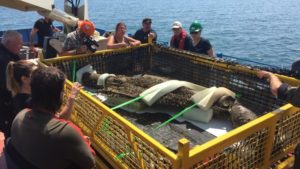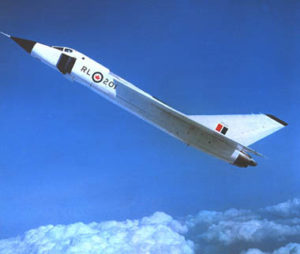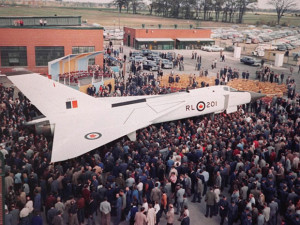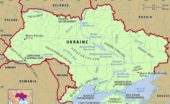Re Ian Bremmer 'Could third-party candidates upend the 2024 US election?' 3 April The current political movement in the USA…
AVRO Arrow: Postscripts to Wednesday Night #777
Written by Diana Thebaud Nicholson // October 4, 2022 // Aviation & Aerospace, Canada // Comments Off on AVRO Arrow: Postscripts to Wednesday Night #777
Wednesday Night #777
The Avro Arrow Home Page: keeping the memory alive
Avro Arrow: “There Never Was an Arrow”
Friday 20 February 1959 is known as “Black Friday” in Canada’s aviation community.
On that day, Prime Minister John Diefenbaker rose in the House of Commons
and terminated the A.V. Roe Arrow, the world’s most advanced military aircraft.
The Avro Arrow History in Pictures
(Warning: you may want to turn the sound off
– it doesn’t add anything!)
4 October 2022
SIERRA HOTEL AERONAUTICS on Facebook
On this day in aviation history, The Avro Canada CF-105 Arrow was rolled out for the first time in 1957. The CF-105 was a delta-winged interceptor designed and built by Avro Canada, and considered by many, to be far ahead of its time, with projected near-Mach 2 speeds at altitudes of 50,000 feet.
Sadly, on 20 February 1959, the CF-105 Arrow program (and its Iroquois engines) was abruptly halted, and a short two months later, the entire assembly line, tooling, existing airframes and engines were ordered to be destroyed. Nothing survived, not even a blueprint.
Following the cancellation of the Avro Arrow project, CF-105 Chief Aerodynamicist Jim Chamberlin led a team of 25 engineers to NASA’s Space Task Group to become lead engineers, program managers, and heads of engineering in NASA’s manned space programs—Projects Mercury, Gemini and Apollo.
The Space Task Group team eventually grew to 32 Avro engineers and technicians, and became emblematic of what many Canadians viewed as a “brain drain” to the United States.
Among the former Arrow team engineers to go south were Tecwyn Roberts (NASA’s first Flight Dynamics Officer on Project Mercury and later Director of Networks at Goddard Space Flight Center) John Hodge (Flight Director and Manager on the cancelled Space Station Freedom project), Dennis Fielder (Director of Space Station Task Force, later the Space Station), Owen Maynard (Chief of the LM engineering office in the Apollo Program Office) and Rod Rose (Technical Assistant for the Space Shuttle program).
16 June 2020
The record-breaking jet which still haunts a country
A decade after the end of World War Two, Canada built a jet which pushed technology to its limits. But its demise showed why smaller nations found it difficult to compete in the Jet Age.
By Mark Piesing
(BBC) In the early years of the Cold War, Canada decided to design and build the most advanced fighter aircraft in the world.
Canada is well known for its rugged bush planes, capable of rough landings and hair-raising take-offs in the wilderness. From the late 1930s, the North American country had also started to manufacture British-designed planes for the Allied war effort. Many of these planes were iconic wartime designs like the Hawker Hurricane fighter and Avro Lancaster bomber.
Ambitious Canadian politicians and engineers weren’t satisfied with this. They decided to forge a world-leading aircraft manufacturing industry out of the factories and skilled workforce built up during the war. Tired of manufacturing aircraft designed by others, this new generation of Canadian leaders were determined to produce Canadian designs. Avro Aircraft, the Canadian airplane maker created after the war, was the company that would deliver their dream.
Freed from the set ways-of-thinking of Avro’s more established rivals, the firm’s engineers were able to work on revolutionary jet fighters, commercial airliners, flying saucers and even a space plane. They placed Canada at the technological cutting edge of the new Jet Age.
In so doing, these engineers challenged notions of what small countries like Canada could achieve in the hi-tech industries of the day, even if convincing politicians to stump up the cash for them was an altogether trickier business.
… the Avro engineers created the first non-experimental fly-by-wire control system (a system that replaces the conventional manual flight controls of an aircraft with a computer-controlled system) in an aircraft and a navigational computer that used real-time telemetry. They used new materials in its airframe, and, at a sister company, designed and built the new powerful, lightweight, supersonic Iroquois engine. To make the most of its capabilities, the interceptor spawned a new weapons programme called Astra (nicknamed “Astronomically Expensive”), and a new missile.
… The Arrow achieved another first. It was the first time that engineers built prototypes of such a sophisticated aircraft using production tooling rather than handmade by engineers. This process meant that it was a mere 28 months from the first drawing of the Arrow to its rollout, and by February 1959 the production line was up and running.
By the time the loudspeaker crackled into life on Black Friday, there were five flying prototypes. There was another fitted with an Iroquois engine nearly ready to fly and another four in various states of assembly. In the factory were the majority of parts for the production aircraft. Proposals for a Mach 3 and a hypersonic – Mach 5 – version of the Arrow were on the drawing board, as was a “zero-length launch Arrow”, which would blast into the air from a raised launch pad like Thunderbird 1 from the science fiction television series.
“Problems had been brewing, if not publicly discussed, for many months before Diefenbaker made his decision,” says Wakelam. “The issue of whether to keep going or abandon the project was caught in the warp and weft not only of national pride and technological advancement but also in the economics of jobs, limited federal budgets, scarce markets and shifting threats.”
As with the Jetliner, Diefenbaker’s government ordered all the prototypes broken up despite the offers from the United States to buy all the completed planes, as well a request from Britain to use some of the aircraft for research into supersonic flight The rest of the Arrow project fared no better. The government had cancelled the Astra system already. One Iroquois engine was given to Britain to help its supersonic airliner project. Yet, the government didn’t pursue the project, despite commercial interest.
However, Nasa didn’t waste any time. They first approached Avro’s engineers within hours of the project’s cancellation. The 32 men they chose went to work on projects like Mercury, Gemini and Apollo. Jim Chamberlain, ex-chief of technical design, led the Gemini mission and was one of the leading advocates for the Lunar Orbit Rendezvous (LOR). Owen Maynard, a former senior stress engineer, was the man most responsible for the design of the Lunar Module.
6 January 2020
Avro Arrow blueprints on display after sitting in Sask. man’s home for decades
(CBC) Blueprints ordered destroyed after fighter jet project scrapped 60 years ago; aeronautical designer saved them
Thanks to an intrepid rescue more than 60 years ago, original blueprints of a famously cancelled Canadian military project are now on display at the University of Saskatchewan’s Diefenbaker Canada Centre.
After inheriting the blueprints, [his son] Gord Barnes wasn’t sure what to do with the historic documents. Eventually, he decided to lend them to the Diefenbaker Centre to be used as part of its exhibition Touch the Sky: The Story of Avro Canada.
In addition to the blueprints, the exhibition also features models of the Arrow, trading cards and collectibles.
Touch the Sky: The Story of Avro Canada runs until April.
20 February 2019
Richter: Sixty years later, the Avro Arrow continues to soar in our imagination
(Ottawa Citizen) On Feb. 20, 1959, despite some last-minute efforts by Avro to make the requested cuts, the government carried out its threat, and Canada’s burgeoning aviation industry was effectively shuttered. Most regrettably, because of fears of Soviet espionage – this just a decade after the Igor Gouzenko revelations – the few completed Arrows, along with others on the production line, were chopped into pieces and all project records destroyed. The image of Arrows sitting on a tarmac in various stages of demolition is one that will forever be seared in the country’s consciousness.
The passage of time has not diminished the aircraft’s appeal. Indeed, the past decade has revealed that our interest remains as intense as ever.
A decade ago, on the occasion of the 50th anniversary of the cancellation of the Avro Arrow (a day forever remembered as Black Friday), I wrote an opinion piece on the long-term effects of that decision, one that for many Canadians signified the end of this country’s willingness to dream big on the world stage.
Ten years later, is there anything new to add? Surprisingly the answer is yes, as recent developments reveal continuing efforts to recapture the plane’s mystique, and how the project remains a shining example of what Canada once was and, at least for some, can be again.
The developments suggest that the Arrow continues to captivate Canadians, six decades after cancellation. But we should probably not be surprised. The plane has long since become a symbol of a different time and place, one that is today viewed through rose-coloured glasses. Whether the aircraft was as good as its supporters believed – and some evidently still do – is no longer the issue, and perhaps never was. Rather, the Arrow has become part of Canada’s collective soul, and as long as that soul has a heartbeat, the aircraft will continue to inspire and fascinate.
2018
22 August
There is something mystical – or mythical – about the Avro Arrow – it just won’t die!
Sunken Avro Arrow model recovered from Lake Ontario
 Aircraft was designed to intercept Soviet planes over the Arctic
Aircraft was designed to intercept Soviet planes over the Arctic
(CBC) An iconic piece of Canada’s aviation history has been pulled from the depths of Lake Ontario, and now the team that recovered it is hoping to find more beneath the waves.
Divers brought what is believed to be a scale model of the Avro Arrow to the surface last week off Prince Edward, and delivered it to the Canada Aviation and Space Museum on Tuesday.
Since last September, a series of models has been found at the bottom of Lake Ontario.
The recovered model is about three metres long — a 1/8 scale of the actual plane, according to Erin Gregory, an assistant curator at the museum.
“It looks like a rocket with large triangular wings,” she said.
The Canadian Conservation Institute and the museum will oversee conservation and restoration of the models.
What they found last week isn’t the full replica of the Arrow the search group was hoping to find. Instead they believe the smaller model was meant to test the delta wing design — the triangular shape the plane was known for.
Several different models were flown for testing over Lake Ontario between 1954 and 1957 as the plane was being developed.
“The delta wing was a relatively new concept at that point, so it required a lot of testing to determine whether or not it would perform well, particularly at supersonic speeds,” Gregory said.
John Burzynski, the leader of the search group, said he’s happy they recovered the model and plan to recover anything they find, but that the real prize would be one of the last five versions tested before a fully functional jet was built.
“The original object of the survey was to find one of those last five. It’s very identifiable as an exact replica of the flying plane,” Bruzynski said.
 Photo courtesy The Arrow Heads/Boston Mills Press
Photo courtesy The Arrow Heads/Boston Mills Press
The greatest plane that never was
The Avro Arrow was the first and only supersonic interceptor built in Canada, developed to respond to Soviet bombers that could attack North America by flying over the Arctic.
In 1959, the Arrow program was suddenly cancelled. Six completed planes and related construction material were destroyed.
Finding the models and being able to see the progression of the program highlights Canadian ingenuity, Gregory said.
“[It] speaks to the science, technology and engineering that went into the production of the greatest plane that never was.”
Four other models have been located on the bottom of the lake, and Burzynski said his team plans to bring them up next summer and hopefully locate more.
“The Avro has been in the forefront of a lot of Canadians’ minds over the years. It’s really more of a piece of living history.”
2017
14 July
Raise the Avro Arrow: Group looks to recover prototypes from Lake Ontario, 60 years later
Between 1954 and 1957, nine Avro models were fired at the lake to test its design and flight — they are now ‘the only intact pieces of that whole program’
(National Post) The Avro Arrow was Canada’s aviation superstar of its day — before the program was scrapped and almost all trace of it destroyed. But nine unmanned prototypes were fired into Lake Ontario during testing. Now, sixty years later, the OEX Recovery group, in collaboration with the Canada Aviation and Space Museum, is heading into Lake Ontario find them. Mitchell Thompson reports.
These models, at the bottom of Lake Ontario, are the only intact pieces of that whole program,” said David Shea, VP engineering for Kraken Sonar, which is providing the technology to find the Avro models.
The project was groundbreaking right before cancellation, Karl Kenny, CEO of Kraken, said. “Back in the 1950s, there was no computer modelling to see how they’d fly, so the designers had to use a physical model. Then, it went back to the engineers for fine-tuning. The ninth model is the holy grail. They had it perfected.” With the models in the lake and the prototypes destroyed, Shea said, the Iroquois engine, which had “significantly more thrust,” than those in most other planes, was shelved.
Kraken expects to survey the water off Point Petre in two weeks and will start “as soon as the equipment reaches the site,” Kenny said. Burzynski isn’t so sure. “The Kraken guys are calling for a two-week search but that’s two weeks with 30 degree weather, no rain, no dead batteries, no one sleeping in or getting a punctured tire. I’d call that four weeks.” Burzynski said OEX hopes to find the first plane by end of August.
2015
20 Februry
Moment in time: Feb. 20, 1959 — Avro Arrow cancelled
When John Diefenbaker terminated the dream-big RCAF project to build a supersonic jet that could intercept nuclear-armed Russian bombers in the Arctic battle zone, 14,500 Canadians immediately lost their jobs. The Avro Arrow lives on in legend as a prize example of what this modest, middling country could achieve if only its imagination and budget were unbounded – besides stopping the Soviet Bear in its tracks, the Arrow was a model of ingenuity and elegance, streamlined form fitted to the urgency of the interceptor’s high-speed, high-altitude function. The Arrow may have been beyond state-of-the-art, but unfortunately the Cold War’s strategic priorities altered during its troubled 10-year gestation. By 1959, long-range missiles were the order of the day, for attack and response. The Arrow became a frill, and a modest country turned elsewhere for its needs. — John Allemang (Some great black & white photos)
2012
16 September
NDP to meet with Avro Arrow advocates
(Global) The NDP will be meeting this week with the Canadian group that’s pitching a plan to resurrect the Avro Arrow as a solution to the government’s fighter jet problems.
“We’ve got a great aerospace industry in Canada, and of course, updating, bringing a much more modern version of the Avro Arrow or something along those lines would make a lot more sense,” NDP leader Thomas Mulcair said Sunday, comparing the storied Canadian jet to the U.S.-built F-35 the government was on track to purchase.
“We could define our own needs for our armed forces, our weather conditions, and we could build something in Canada, leaving all the benefits here instead of shipping those jobs south.”
Global News | NDP to meet with Avro Arrow advocates
 Photo credit: John Major/Postmedia News Files
Photo credit: John Major/Postmedia News Files
The Arrow’s debut to the world as it was pulled out of the hanger to be viewed by Avro employees and invited guests. A Canadian company is seeking to go back in time to help fly Canada’s air force into the future. The storied CF-105 Avro Arrow was put forward as an alternative to the purchase of F-35 stealth fighter jets.
10 September
Ottawa accused of axing Avro Arrow revival too soon
Retired major-general Lewis MacKenzie argues jet’s comeback is viable alternative to F-35
The federal government was too fast to write off a proposal to build a made-in-Canada military aircraft that would be cheaper, faster and more efficient than the F-35, says retired major-general Lewis MacKenzie.
In an interview on CBC News Network’s Power & Politics, MacKenzie said he first approached officials about a year ago about the plan by Bourdeau Industries, which has offices in Canada and the U.K., to redesign the Avro Arrow CF-105 as an alternative to the F-35 stealth fighter jet. He said he personally delivered the proposal to the ministerial level and the Prime Minister’s Office, and that it was shared with defence department officials, including incoming Chief of Defence Staff Lt.-Gen. Tom Lawson. …
Now that audit firm KPMG has been tasked to review the department’s figures for the project, MacKenzie said it should also review the merits of other alternatives, like the Avro Arrow, by consulting with aerospace, business and manufacturing experts. He believes the Canadian public wants an investigation of the concept to determine if it’s practical.
More from RCI including extensive links to archival material
A Canadian aerospace legend re-born?
Canadian MGen (ret) Lewis Mackenzie has become an advocate for the project. RCI’s Marc Montgomery spoke to him about the proposal.
9 September
Feds reject bid to revive Avro Arrow
(Global News: The West Block) The Harper Conservatives quietly dismissed a Canadian company’s plan for an alternative to the plagued F-35 program — a revival of a national legend that one of the country’s most celebrated infantry commanders says is far superior to the planned American purchase.
The alternative aircraft can fly 20,000 feet higher than the F-35, soar twice as fast and will cost less, the project’s organizers wrote in documents obtained by the Global News program The West Block.
The jet in question is the storied CF-105 Avro Arrow — the project designed, produced and tested more than half a century ago, before the government suddenly cancelled the program and ordered all data destroyed, sparking an enduring political debate.
From the pages of history, a consortium of Canadian manufactures and aerospace executives in July 2010 presented a plan to the federal government that would see the 1950s CF-105 Avro Arrow upgraded and re-modelled with modern technology.
The result, they say, will be a jet that flies faster and more powerfully than the F-35 — or much else on the market.
“The basic design and platform still today exceed anything that’s on the books, or anything that’s flying by way of a fighter — easily more than the F-35,” said retired Maj.-Gen. Lewis MacKenzie, a staunch defender of Canada and its military missions.
MacKenzie is a core advocate for this project, although he says he holds no financial stake in it. In an interview with The West Block host Tom Clark, the retired infantry soldier said he became involved as a “patriot” who had serious doubts about the F-35 program, and was happy to use his connections to get the plan in front of government and military officials.
With the proposal in hand, the Harper government would have read that enough 1950s data survived the ordered destruction, allowing engineers today to recreate the jet.
“Sufficient inventory of original Arrow CF-105 engineering ‘hard’ data… exists to allow the reverse engineering of the (original) platform and design upgrade in a 21st century context,” reads the proposal submitted by Marc Bourdeau who, as president of Bourdeau Industries, is spearheading the venture.
The “hard data,” he wrote, includes parts, drawings, blueprints and original supplier companies.
There is also plenty of “soft data,” such as videos, interviews and engineering lectures, to help today’s engineers reconstruct and modernize the Arrow, turning it into a jet viable for modern-day requirements, the report reads.
“It’s an evolution of the model,” MacKenzie said during the interview. “It would (have) upgraded technology and upgraded materials to improve upon the original Avro Arrow.”
The project managers argue that not only would the re-incarnated Arrows be superior jets to the F-35s the Conservatives plan to purchase, but that the “made in Canada” scenario would boost the national economy and create jobs — a stated interest of Harper’s government.
In his pitch, Bourdeau guarantees that more than 95 per cent of government funds invested in the proposed acquisition and operational costs — $9 billion, or more than $20 billion over the jets’ lifespan — would remain in Canada. Plus, the project would create up to 25,000 direct and 175,000 indirect jobs in Canada’s “revitalized” aerospace industry.
On top of that, MacKenzie said, “it’s ours.”
At MacKenzie’s insistence, National Defence looked at the plan.
But it was firmly rejected when Julian Fantino, at the time the minister in charge of the fighter jet replacement program, wrote back to say the proposal “does not satisfactorily address these mandatory requirements.”
One of those requirements, mentioned three times in the June 29 letter to MacKenzie, is stealth capabilities — a quality the F-35 is purported to have, but that many experts have questioned.
During an NDP-led roundtable on the F-35 procurement process last month, Winslow Wheeler, a U.S. national security expert and former defence analyst in Washington, said the stealth capabilities of the F-35 are limited.
“The hoopla is stealth,” he said. “But what stealth really means is that against some radars, at some angles, you are detectable at shorter ranges. And what that means, is that against some radars, at some angels, you are detectable at any range as soon as you come over the radar horizon.”
Although stealth can provide a tactical advantage, Wheeler said, it’s a limited one that compromises the design of the aircraft. Further, the stealth capabilities of the F-35 would be hindered once the suite of weapons are attached to the body of the aircraft, critics say.
Still, the minister wrote in June, the funds and time needed to develop the updated Arrow’s airframe, avionics, sensors and mission systems are too much for Canada.
“The risks associated with undertaking this developmental effort would be too high to consider,” Fantino wrote.
More than two months before that letter was sent, the Conservatives had pressed the pause button on its attempt to replace the military’s aging fleet of CF-18s jets, in response to the fallout from Auditor General Michael Ferguson’s explosive report on the botched process to acquire the F-35s.
After Ferguson released his report on the $25-billion purchase, the government created an office to oversee the acquisition of Canada’s next fighter jets.
One of the new secretariat’s tasks is to weigh whether the government should consider other jets as well as the F-35s — the aircraft critics say the military selected without considering alternatives.
But critics have questioned the potential effectiveness of the office, which is operating within Public Works and has deputy ministers from that department, National Defence and Industry Canada at the table.
At last month’s roundtable, University of Ottawa defence procurement expert Philippe Lagasse questioned the secretariat’s mandate.
While the government said the new office will provide decision-makers with more information, Lagasse said it isn’t clear whether it will be able to address three issues he identified as key — whether it will review the Air Force’s requirements which only the F-35 meets, whether it will conduct a comprehensive cost-benefit analysis of other aircraft the Forces might consider, and whether it will examine the government’s underlying policy behind the procurement.
Although the secretariat was officially underway at the time Fantino rejected the proposal, there is no mention of it in his letter to MacKenzie, who has added his name to the list of its critics.
“He could well be right,” Mackenzie said of the minister’s reasoning behind turning down the Bourdeau proposal. “But those who assess the risks shouldn’t be from what is being presented as an impartial committee.”
With government and military representatives at the table, MacKenzie said he doesn’t understand how the secretariat can be considered independent.
“Independent from what?” he asked. “I would like to see the aerospace industry, manufacturing, business people… Put a committee like that together and have them look at the practicality of the idea.”
Read it on Global News: Global News | Feds reject bid to revive Avro Arrow
Will legendary Avro Arrow make Lazarus-like return?
(Globe & Mail) The federal government is being urged to reach back in history for a made-in-Canada solution to its fighter jet woes by resurrecting the legendary but aborted Avro Arrow interceptor to serve as this country’s next war plane.
It may seem a far-fetched idea but backers – including retired major-general Lewis MacKenzie – insist that a revised version of the 1950s jet, with an upgraded engine, would outperform Ottawa’s preferred choice on several important counts.
Avro Arrow redesign pitched as alternative to F-35 stealth fighter jets
(National Post) A Canadian company is seeking to go back in time to help fly Canada’s air force into the future.
Documents obtained by the Global News program The West Block indicate an update to the storied CF-105 Avro Arrow was put forward as an alternative to the purchase of F-35 stealth fighter jets.
And among the project’s champions is one of Canada’s top soldiers, retired Maj.Gen. Lewis MacKenzie.
The Arrow was an advanced, all-weather supersonic interceptor jet that was developed in the 1950s. Several prototypes were built and flight tests were conducted, but the project was abruptly shut down in 1959 and the aircraft never went into production.
4 October 2007
From CBC’s “As It Happens”
Several emails to As It Happens included this pointed question: Why did we devote airtime to the Soviet satellite that sent the U.S. into a frenzy, while missing the boat on another significant birthday…a Canadian birthday, no less?
This is from John Stewart of London, Ontario:”I am more than a little surprised that no mention has been made of the significance of this date in the history of Canadian aviation. October 4, 2007, is the fiftieth anniversary of the roll out of the CF105 Avro Arrow, whose fate may well have been shaped by today’s other significant event in engineering history, the launching of Sputnik.
“Still, Sputnik did not result in the death of manned fighter aircraft, as was predicted in 1957. However, Canada’s military aviation industry was dealt a death blow with the cancellation of the Arrow contract in 1959.”Paul Colman of Toronto said this:
“Fifty years ago, the Avro Arrow’s unveiling would have been front page news had it not been for the launch of Sputnik. As it was, coverage of the Arrow was pushed to the interior pages of the newspapers. It’s ironic that 50 years later, the rollout of the Arrow was again totally overshadowed by Sputnik.”Steve Edgar of Toronto says “then as now, the big story was Sputnik”. He adds this:
“Please remind Canadians of the time when Malton was the centre of the world in advanced aerospace technology. We were second to none. The fact that politicians killed an unbelievably advanced technical project that put Canada ahead of all other nations still resonates to this day.”
Paul Squires, Curator of the Alberta Aviation Museum in Edmonton also wrote to say no one on CBC even mentioned the fiftieth anniversary of our first, last and only made-in-Canada supersonic interceptor: “Poor Arrow,” wrote Mr. Squires. “Upstaged again.” Better late than never, we say. Your missives sent us scurrying to our Radio Archives, with our proverbial tails between our legs.
Debating the Arrow’s legacy
(CBC Digital Archives) It’s the closest thing Canadian industry has to a love story and a murder mystery. The Avro Arrow, a sleek white jet interceptor developed in Malton, Ontario in the 1950s, could have been many things. It might have become the fastest plane in the world, our best defence against Soviet bombers, the catalyst to propel Canada to the forefront of the aviation industry. Instead, it became a $400-million pile of scrap metal, and the stuff of legends.
In January 1997, CBC broadcasts a four-hour miniseries called The Arrow that generates powerful reactions from Canadians who love or hate the legendary plane. Calling in to CBC’s Radio Noon, historian Michael Bliss calls the miniseries “an orgy of mythologizing,” arguing that Avro was a disaster and the Arrow got what it deserved. Broadcaster Elwy Yost, who worked at Avro for six years, says that’s the most stupid statement he’s heard in 40 years.
THE CF105 AVRO ARROW:
Videos – Movies – Audio – Animations



